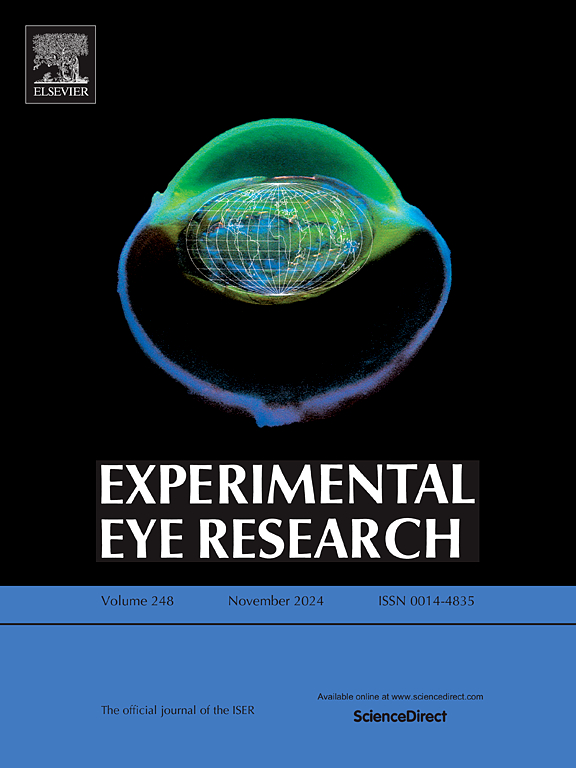姜黄素改善苯扎氯铵引起的小鼠干眼病。
IF 3
2区 医学
Q1 OPHTHALMOLOGY
引用次数: 0
摘要
干眼病(DED)可因苯扎氯铵(BAC)而加重,苯扎氯铵是眼科配方中的防腐剂,可通过炎症、细胞凋亡和氧化应激诱导眼部损伤。通过网络毒理学、分子对接、动力学模拟和小鼠模型,我们阐明了BAC的机制,并评估了姜黄素(curcumin, CUR)作为治疗药物的作用。网络分析确定了492个共享的BAC-DED靶点,这些靶点在炎症、白细胞迁移和细胞因子产生方面功能丰富。优先考虑TNF/IL-17信号传导和核心介质(il - 6、TNFα、CASP3)。CUR具有较强的结合亲和力(如MMP9: -9.2 kcal/mol)和稳定的配合物(RMSD)本文章由计算机程序翻译,如有差异,请以英文原文为准。
Curcumin ameliorates benzalkonium chloride-induced dry eye disease in mice
Dry eye disease (DED) is exacerbated by benzalkonium chloride (BAC), a preservative in ophthalmic formulations, which induces ocular damage via inflammation, apoptosis, and oxidative stress. Using network toxicology, molecular docking, dynamics simulations, and murine models, we elucidated BAC's mechanisms and evaluated curcumin (CUR) as a therapeutic agent. Network analysis identified 492 shared BAC-DED targets, functionally enriched in inflammation, leukocyte migration, and cytokine production. TNF/IL-17 signaling and core mediators (IL6, TNFα, CASP3) were prioritized. CUR exhibited strong binding affinity (e.g., MMP9: −9.2 kcal/mol) and stable complexes (RMSD <0.3 nm). In vivo, CUR reduced corneal damage, restored goblet cells, and suppressed IL6, TNFα, and CASP3. Mechanistically, CUR inhibited NF-κB/caspase-3 and enhanced antioxidant pathways. These findings position CUR as a multi-target agent disrupting DED's inflammatory-apoptotic-oxidative cycle, supporting its repurposing for preservative-associated DED and highlighting integrated computational-experimental approaches in ocular pharmacology.
求助全文
通过发布文献求助,成功后即可免费获取论文全文。
去求助
来源期刊

Experimental eye research
医学-眼科学
CiteScore
6.80
自引率
5.90%
发文量
323
审稿时长
66 days
期刊介绍:
The primary goal of Experimental Eye Research is to publish original research papers on all aspects of experimental biology of the eye and ocular tissues that seek to define the mechanisms of normal function and/or disease. Studies of ocular tissues that encompass the disciplines of cell biology, developmental biology, genetics, molecular biology, physiology, biochemistry, biophysics, immunology or microbiology are most welcomed. Manuscripts that are purely clinical or in a surgical area of ophthalmology are not appropriate for submission to Experimental Eye Research and if received will be returned without review.
 求助内容:
求助内容: 应助结果提醒方式:
应助结果提醒方式:


